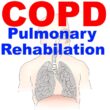COPD Self Management Tips
Taking Charge: Successful COPD Self-Management Techniques
The effects of chronic obstructive pulmonary disease (COPD) can be felt on a daily basis. Nonetheless, you may take charge of your health, enhance your quality of life, and lower your chance of flare-ups (a rapid exacerbation of symptoms) by using the appropriate self-management techniques. This blog post explores three essential techniques to help you take an active role in managing your COPD: action plans, symptom monitoring, and exacerbation awareness.
Table of Contents

The Significance of Self-Management in COPD
COPD Self Management Tips
Medication is only one aspect of managing COPD. By practicing self-management, you can:
- Proactively Manage Symptoms: You can keep mild problems from turning into flare-ups by keeping an eye on your symptoms and acting quickly.
- Reduce Hospitalizations: The requirement for emergency care and hospital admissions can be reduced by identifying and quickly treating deteriorating symptoms.
- Enhance Quality of Life: Managing your COPD enables you to continue living an active lifestyle and engaging in hobbies.
- Decrease tension and worry: One way to lessen the tension and worry related to COPD is to feel empowered to control your illness.
Three Crucial Techniques for Self-Management
COPD Self Management Tips
Plans of Action:
Your doctor and you will work together to create an action plan that details what to do in the event that your COPD symptoms worsen. Usually, this plan consists of:
- Symptom Triggers: recognizing things like dust, smoke, or infections that might exacerbate your symptoms. * Early Warning Signs: recognizing little changes in your breathing patterns, increased production of mucus, or exhaustion that could signal an imminent flare-up.
- Action Steps: Outlining precise actions to take, such utilizing breathing methods, stepping up medication use, or getting in touch with your doctor, in the event that early warning signals materialize.
The advantages of action plans
COPD Self Management Tips
During a flare-up, give precise instructions to minimize misunderstanding and worry.
Promote early intervention to stop the progression of symptoms.
Improve the way you and your healthcare providers communicate about managing your COPD.
Keeping an eye on symptoms:
COPD Self Management Tips
You can keep tabs on your COPD and recognize any changes in your condition by routinely self-monitoring.
Things to Keep an Eye on:
- Breathlessness: Keep an eye on the frequency and intensity of dyspnea, particularly when engaging in regular activities. * Mucus Production: Track the quantity, hue, and consistency of mucus production.
- Wheezing: As you breathe, pay attention to any increase in wheezing noises.
- Fatigue: Abnormally high levels of fatigue may indicate deteriorating COPD. * Peak Flow Measurements: This entails measuring the force of your exhale with a peak flow meter, which may reveal deteriorating airflow.
advantages of symptom observation
COPD Self Management Tips
allows you to recognize patterns and trends in your health.
enables the early identification of possible flare-ups before symptoms worsen.
aids in evaluating the efficacy of your treatment strategy.
Recognizing an Exacerbation: It’s important to respond quickly if you recognize the warning signs and symptoms of an exacerbation, which is a sudden worsening of your COPD.
Typical Signs of Exacerbation:
COPD Self Management Tips
- Enhanced dyspnea, even during idleness.
- A noticeable rise in mucus production and a yellow or greenish color change
- A rise in tightness in the chest or wheezing.
- Sweat or cold.
- Unexplained weakness or exhaustion.
- Shifts in sleep habits, such as trouble falling asleep.
- An appetite decline.
Recognition of Exacerbations Is Critical
COPD Self Management Tips
Allows for timely intervention, which may reduce the intensity and length of flare-ups.
may avoid the requirement for emergency care or hospitalization.
facilitates efficient communication about any changes in symptoms with your doctor.
Recall to get in touch with your doctor right away if you notice any symptoms that point to an aggravation.
Action plans, symptom monitoring, and exacerbation awareness are three self-management techniques that you can use to help manage your COPD. By collaborating with your physician, you can enhance your overall well-being and facilitate better breathing.


